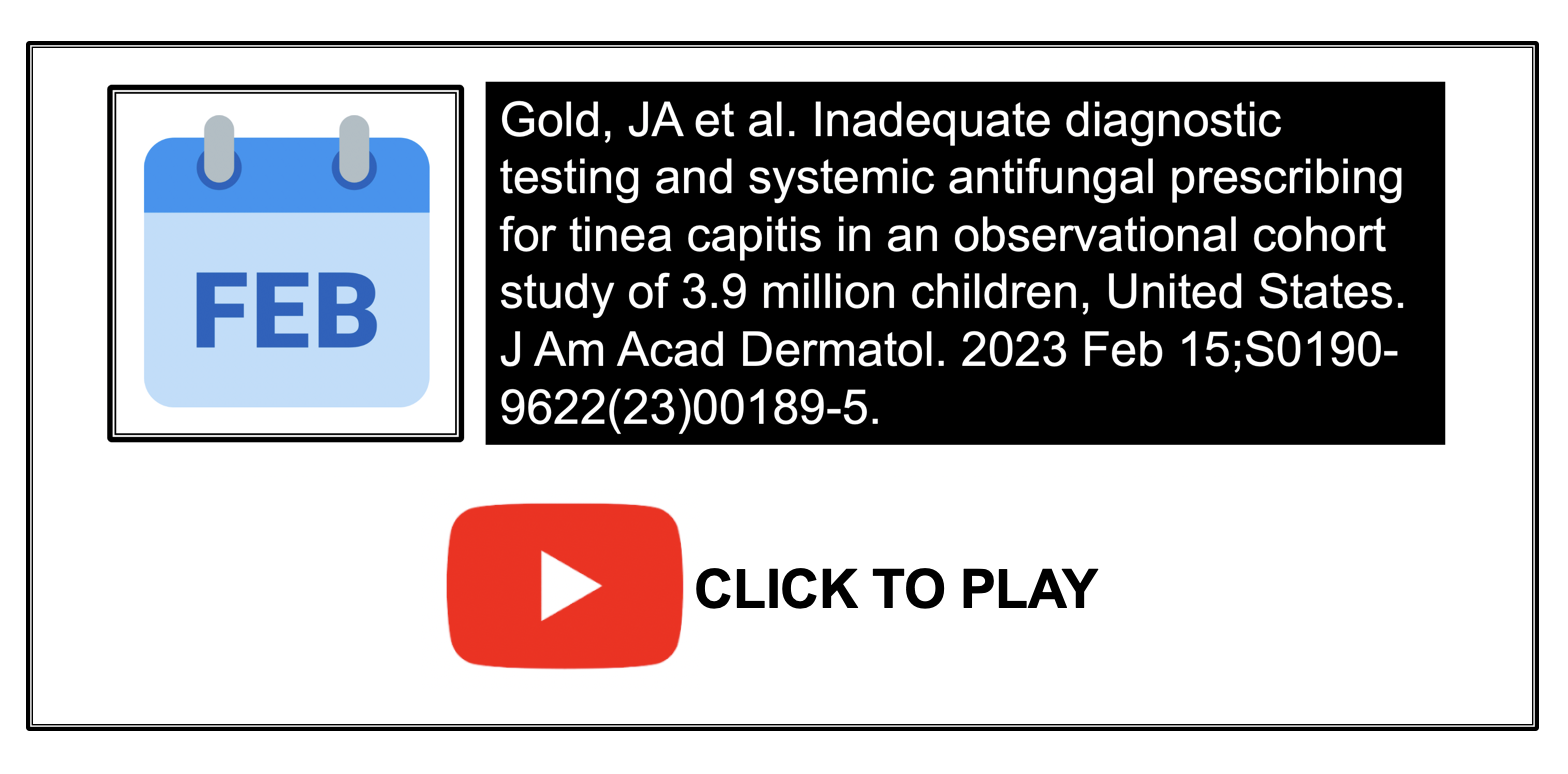40 % of children Not Properly Treated for Tinea Capitis
We Still Have Gaps in Effective Management of Tinea Capitis
Tinea capitis is a fungal infection of the hair. It is more common in children than adults and requires oral antifungal treatment rather than treatment. Suboptimal treatment can lead to persistence of infections, spread to others and potentially permanent hair loss.
Authors set out to evaluate a data of patients less than 18 years. They used the Merative MarketScan Commercial Database to calculate tinea capitis incidence according to age and better understand how children where treated.
Among 3,929,156 patients, the 1-year tinea capitis incidence per 10,000 person-years was 16.3. The incidence was highest among 5-year-olds (31.6; 95% CI, 29.1-34.0), males (20.9; 95% CI, 20.3- 21.5), and Southern residents (22.5; 95% CI, 21.8- 23.2). It was interesting to specifically note that incidence was 6 times higher in a 5 year old than a 17 year old. Males had a two fold higher incidence than females.
Pediatricians were making most of the diagnoses of tinea capitis. Patients were diagnosed by pediatricians (54.6%), followed by dermatologists (11.7%) and family practitioners (10.4%).
What was concerning in this study was that confirmatory testing was very infrequent. Most children did not have confirmatory testing. Confirmatory testing was done in 21.9% of patients and the most common tests were fungal culture (17.8%) and direct microscopy (9.7%).
Surprisingly, despite oral antifungals being the mainstay of treatment, 40 % of children did not have oral antifungal treatment. 61.2% were prescribed an oral antifungal (most frequently griseofulvin [52.7%]), followed by terbinafine [5.5 %] and fluconazole [3.3%] and rarely itraconazole [0.1%]. 14.7% of children were prescribed topical antifungal therapy alone.
Patients prescribed topical therapy alone were more often diagnosed by family practitioners (22.1%) than by dermatologists (17.5%) or pediatricians (10.1%) (P < .01).
Summary
This is a valuable study which highlights our gaps in knowledge. Most patients with TC in this study received no confirmatory laboratory testing. This is concerning because visual inspection alone of suspected cutaneous fungal infections can lead to diagnostic errors and unnecessary antifungal use. In addition, it prevents identification of the species and further tracking of the origin of the fungus.
There appears to be a lack of knowledge or some sort of fear about using oral antifungals given that 38.8% of patients with TC were either prescribed topical treatment alone or not prescribed antifungals. The mainstay of treatment is oral medications. Because tinea capitis can lead to a permanent second scarring alopecia if not appropriately treated, it is important to ensure this condition is fully treated.
REFERENCE
Gold, JA et al. Inadequate diagnostic testing and systemic antifungal prescribing for tinea capitis in an observational cohort study of 3.9 million children, United States. J Am Acad Dermatol. 2023 Feb 15;S0190-9622(23)00189-5.
This article was written by Dr. Jeff Donovan, a Canadian and US board certified dermatologist specializing exclusively in hair loss.

